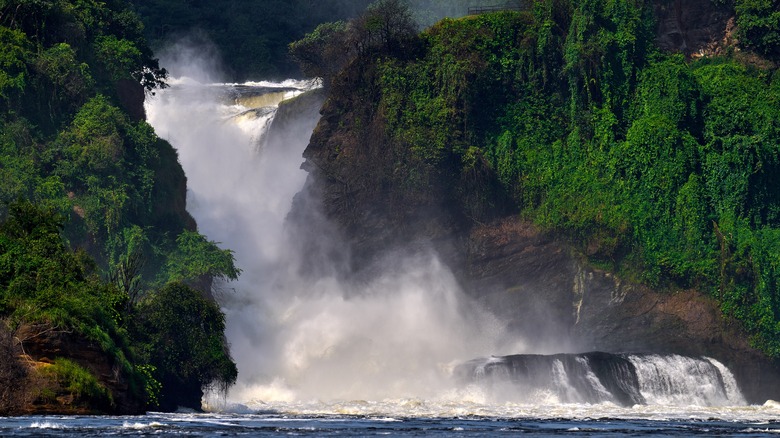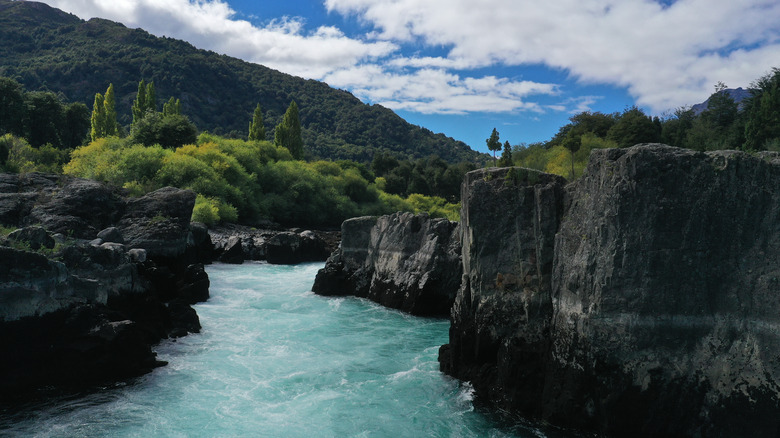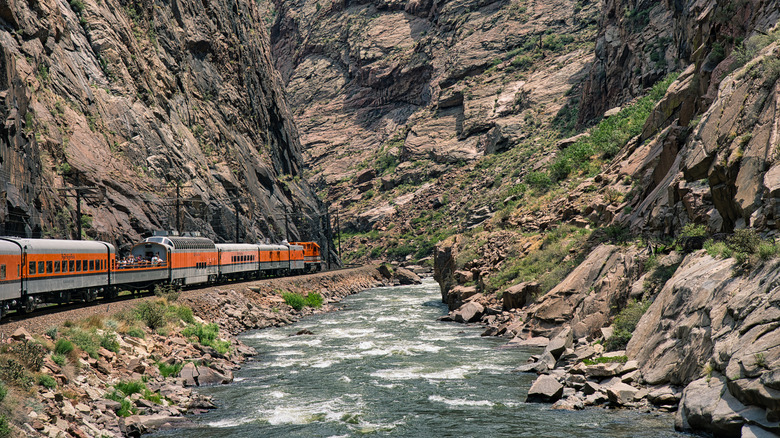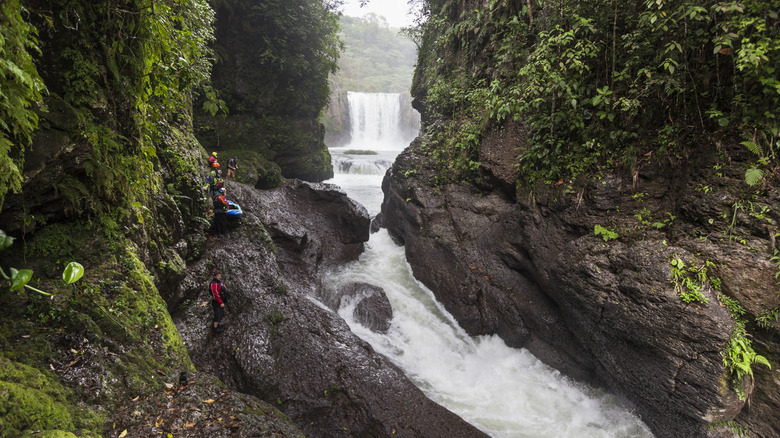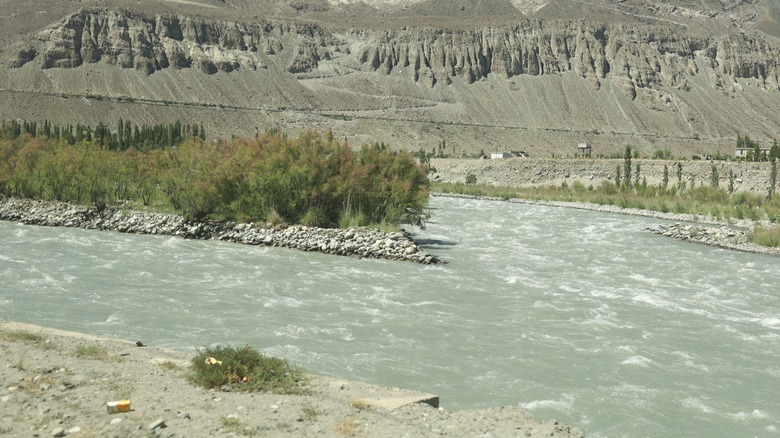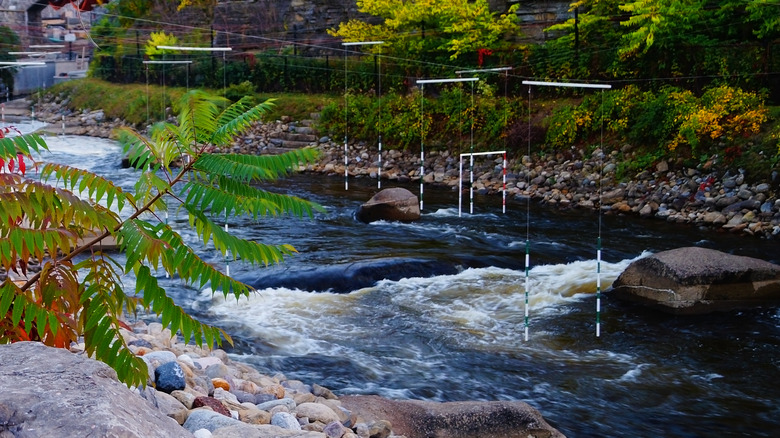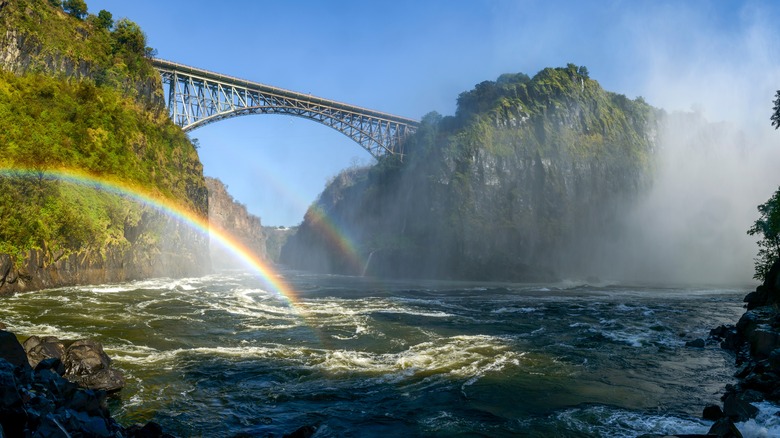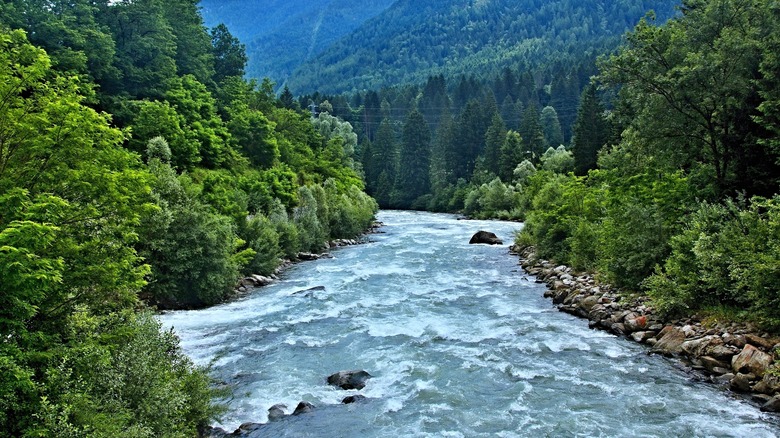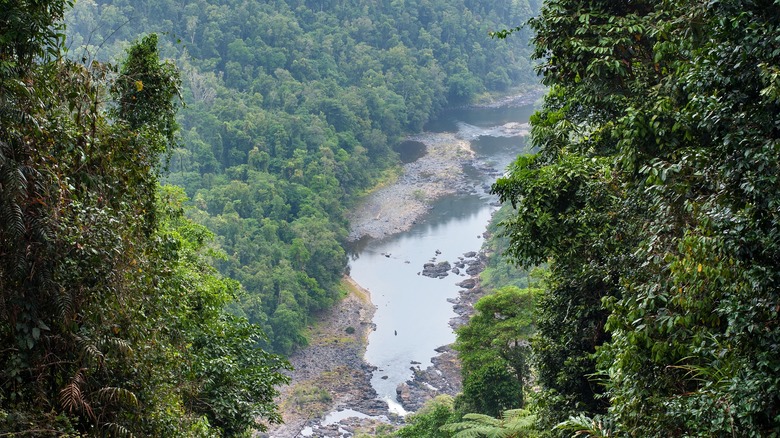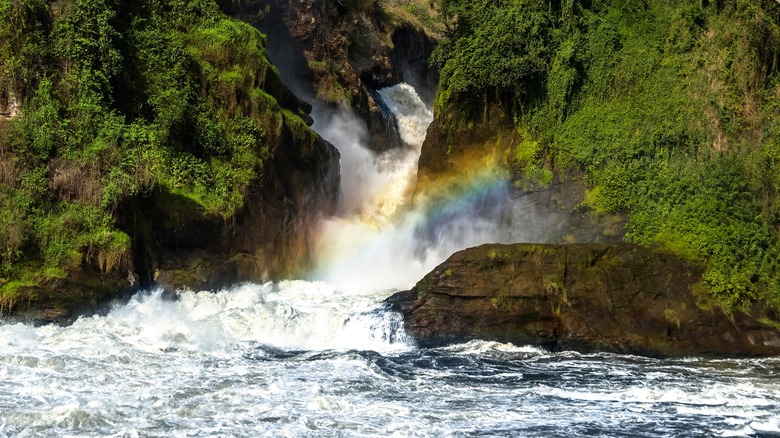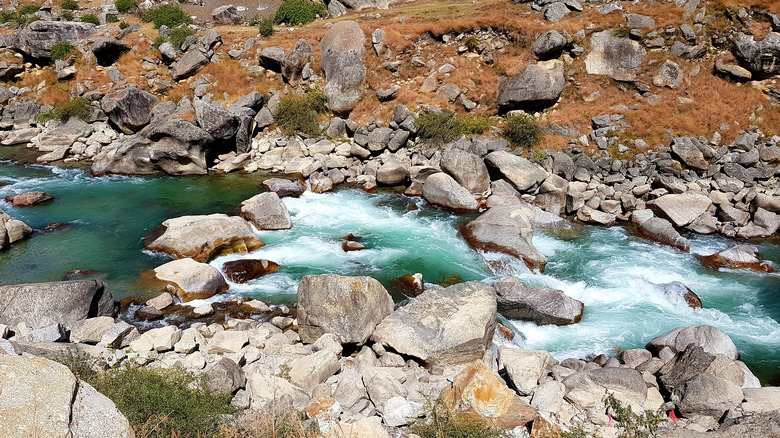The Most Dangerous Rapids In The World
The world is filled with thrilling yet dangerous whitewater destinations, from the rugged canyons of Colorado to the remote wilderness of Nepal. These locations are famous among adventure enthusiasts for their challenging rapids and adrenaline-pumping experiences. They attract people from all over the world who are drawn by the promise of heart-pounding excitement amid breathtaking natural scenery.
The Futaleufú River in Chile is one such location that stands as a testament to nature's raw power, with its turbulent waters and steep drops, challenging even the most experienced rafters with its relentless currents. Similarly, the Royal Gorge in the United States offers a formidable test of skill and nerve, with its narrow canyon walls and treacherous currents creating an environment where only the boldest dare to venture. Each destination, whether it's the untamed rivers of South America or the rugged landscapes of North America, provides a unique blend of natural beauty and dangerous adventure, leaving unforgettable memories among those brave enough to take on their mighty waters.
Some of these destinations are considered Class V, which are extremely difficult rapids with highly irregular, unpredictable conditions, or Class IV rapids, which are advanced rapids with intense, powerful waves and turbulence. While some rapids may have these classifications, others have been added to the list simply because of the dangerous environment of the location itself. If you're planning to attempt any of these rapids, make sure you've got everything you need to whitewater raft.
Futaleufú River, Chile
The Futaleufú River, located in the northern Patagonia part of Chile, and dubbed as the "Crown Jewel" of big water rivers by rafters, is famous for its crystal-clear turquoise waters and Class V rapids. It's also considered one of the most hazardous rivers due to its strong currents, steep drops, and turbulent waters. The river features notorious sections like the Inferno Canyon, Las Escalas, Terminator, and Bridge to Bridge sections, which pose a challenge for even the most skilled kayakers and rafters. This river is a thrilling yet perilous destination for water sports enthusiasts, and it demands technical expertise and knowledge.
Navigating the Futaleufú requires exceptional skill and caution, as its rapids can quickly go from exciting to treacherous. The river's reputation for being one of the most dangerous rapids in the world is well-deserved, with several incidents of capsizing and injuries reported each year. Despite the risks, adventurers are attracted here to conquer its mighty waters and test their mettle against nature's formidable force.
If you're looking for some slower waters, you may want to consider hanging around the top section of the Futaleufú River, but if you're looking for more intense action, you'll find it in the lower section. However, those who dare to take on the Futaleufú must understand that they are taking on a river that poses a threat to even the most experienced paddlers and must be attempted with caution.
Royal Gorge, Colorado
Nestled in Colorado, the Royal Gorge is a narrow canyon that's famous for its towering 1,000-foot walls that overlook the Arkansas River. This breathtaking natural wonder is a popular destination for adventure seekers, who come to experience the thrill of navigating its rapids. However, the Royal Gorge is not for the faint of heart, as it's known to have some of the most challenging rapids in the United States. The Royal Gorge's Class III to V rapids, including sections such as Sunshine Falls and Sledgehammer, demand the utmost skill and expertise from rafters and kayakers. The sheer intensity of the rapids combined with the rugged terrain demands expert skills and precise maneuvering to navigate safely.
Rafters and kayakers should be prepared to contend with swirling eddies and powerful hydraulics, which can easily catch the unwary and lead to capsizing or collisions with the canyon walls. Despite the inherent dangers, the allure of conquering the Royal Gorge draws adventurers searching for the most thrilling places to go whitewater rafting. However, those who embark on this perilous journey must do so with utmost caution and respect for the river's power and are advised to be in good physical condition. Adequate preparation is key, as the Royal Gorge is not a place for inexperienced or unprepared adventurers, and it is recommended that paddlers be at least 13 to attempt the Class IV rapids.
Alseseca River, Mexico
The Alseseca River, with a popular base in Tlapacoyan, Mexico, is known for its challenging rapids, tight canyons, spectacular basaltic gorges, and waterfalls. Surrounded by incredible views and ecological diversity, this river is a popular destination for whitewater enthusiasts seeking Class III to V rapids. Sections like El Chicozapote and El Encuentro offer exciting and risky whitewater experiences with tight and dangerous s-turns. Navigating the rapids of Alseseca requires a combination of physical prowess, sharp focus, and quick reflexes. The fast-flowing currents, tight canyons, and big falls create a formidable environment for paddlers, where split-second decisions can make the difference between success and disaster.
Countless sections of the Alseseca keep drawing paddlers to the region, especially because of the easy roadside access along the river. You can easily find whitewater within a Class III and IV comfort zone on the Alseseca, including classic sections like the Big Banana, Roadside, and Seven Sisters. The narrow channels and rocky outcrops add to the complexity of the journey, requiring paddlers to adapt to the ever-changing conditions.
These qualities are what make competitive paddlers participate in the river's yearly extreme whitewater rafting race. The Alseseca River Race not only provides adrenaline junkies with an extreme sport but helps bring awareness to the ecosystem and preservation along the Alseseca River. These dangerous waters should be approached by paddlers who are adequately prepared for the thrilling yet dangerous twists and drops.
Rondu Gorge, Pakistan
Located in the scenic Karakoram Range, the Rondu Gorge in Pakistan has intrigued whitewater enthusiasts for over 60 years. It is known for its challenging whitewater conditions that push even the most seasoned rafters and kayakers to their limits with its rocky terrain and speed. The gorge boasts Class IV to V rapids, offering adventure seekers a nerve-wracking test of skill and endurance. The fast-flowing currents of the Class V rapids, in particular, can lead to a tired body, experienced or not, and any mistake made can be serious. These are only a few reasons this river has been deemed as one of the most dangerous water runs in the world.
The unpredictable currents that surge through the gorge, coupled with its famous steep drops and numerous rocky obstacles, create a perilous environment where split-second decisions can mean the difference between triumph and disaster. Navigating the Rondu Gorge demands not only technical prowess but also unwavering determination and mental resilience.
The gorge is about 86 miles long, fast, steep, and turbulent to the point that a common eddy, or movement of water that counters the main current behind rocks, becomes dangerous and difficult to approach. Despite the inherent dangers, the allure of the Rondu Gorge continues to attract thrill-seekers from around the world, drawn by the promise of an unforgettable and adrenaline-fueled adventure amid some of nature's most awe-inspiring landscapes.
Ottawa River, Canada
The Ottawa River in Canada is a renowned destination for whitewater enthusiasts, particularly those seeking heart-pounding rapids. Despite offering beginners some easier rapids to enjoy, the Ottawa River features intense rapids such as McCoy's Chute and Coliseum, which are known for their steep drops and large waves, tumultuous waters, and powerful hydraulics. These features create an electrifying, soul-stirring, and dangerous experience that attracts experienced paddlers. The Ottawa River is also dam-controlled and has consistent flows, making it a reliable destination during spring and summer for water sports enthusiasts.
The Ottawa River is divided into three sections of varying intensities. The Main Ottawa River is considered Class IV, offering the most challenging rapids, while the Middle Ottawa River provides Class III-IV rapids. The Lower Ottawa River is made up of Class I-II rapids, making it an excellent choice for beginners. Sections like McCoy's Chute are considered hazardous because of the multiple waves and undertows, which can pull you under or to the side of the river into dangerous rocks.
While this river is an ideal destination for those seeking adventure, it is important to note that the Class IV rapids are not for the faint of heart. Those who dare to embark on this stretch of the river should be prepared for extreme conditions, including powerful currents, steep drops, and intense waves.
Zambezi River, Africa
The Zambezi River, located in the Bakota Gorge in Africa, is famous for its breathtaking Victoria Falls, one of the largest waterfalls in the world. It is also renowned for its challenging whitewater rapids, which have earned it a formidable reputation as one of the most dangerous rivers for rafting and kayaking. The river features Class III to V rapids, such as Oblivion and The Washing Machine, which present daunting obstacles like powerful hydraulics, swirling whirlpools, and precipitous drops. Navigating its turbulent waters demands not just skill but a mastery of the craft, making it a pulse-quickening yet profoundly perilous expedition for adrenaline junkies seeking the ultimate thrill.
With river drops as large as 30 to 50 feet, the Zambezi River has become widely considered to be the very best whitewater-rafting river in the world. It is a deep channeled, high-volume river with a variety of classifications from class III-V rapids interspersed with tranquil pools. The Zambezi River's water levels change drastically throughout the year. July to January experience low water levels, while February to June experience high levels. Despite the occasional calm water, the river's many rapids make it one of the most dangerous in the world. These rapids include the Devil's Toilet Bowl, a large whirlpool with difficult-to-navigate waves, and the Mother Rapid, a run with the river's biggest waves.
Noce River, Italy
The Noce River, located in the Dolomites of northern Italy, is well-known for its challenging and dangerous Class III to V rapids. For example, the gorge of Santa Giustina and Oblivion both promise an exciting whitewater experience against the stunning backdrop of the alpine scenery. The Noce River is divided into three sections, each with its own unique set of rapids. The upper part of the river, known as the "Upper Noce," starts from the Novella Bridge in Val di Sole and offers Class III rapids. The middle section, known as the "Middle Noce," offers Class IV rapids and starts from the town of Dimaro. The lower section, known as the "Lower Noce," offers Class V rapids and starts from the town of Mostizzolo.
Located further south, the Sawmill Rapid is considered the most difficult rapids of the river. As the river moves further down to Cogolo, the water body is joined by Noce Bianco and creates icy whitewater rapids. The Noce River offers some of the most exciting whitewater rafting in Europe, including a spectacular series of Class V rapids as it roars through the gorges of Mostizzolo. Though it offers some family-friendly experiences, the Class V rapids should be approached with caution.
North Johnstone River, Australia
The North Johnstone River in Australia, located 20 minutes from Cairns, is a natural flow river and a popular destination for whitewater enthusiasts seeking a challenging adventure. Here, paddlers can expect Class IV to V rapids that present a difficult skill and endurance test. The river's powerful hydraulics, drops, and jagged rocky outcrops demand skill and a deep understanding of the river's nuances. Paddlers must be aware of the river's ever-changing conditions, which can be affected by rainfall and other environmental factors, making it imperative that they've educated themselves well on what to bring on a whitewater rapid trip, especially in the case of an emergency.
Access to the North Johnstone River is limited, as it can only be reached by helicopter. Once paddlers arrive, they can expect to face difficult waters that require agility and experience during their four- to six-day adventure paddling, if they plan to start at the top. Paddling the North Johnstone River, which is the longest river in Australia, requires not only physical endurance but also mental fortitude.
You can experience narrow gorges with Class V whitewater rapids, as found in the Mordor section, where paddlers must be prepared for the unexpected and be able to make split-second decisions in dangerous situations. However, it's not just the whitewater rapids that make Johnstone River dangerous. While rafting, you may also confront water dragons, crocodiles, eagles, spiders, and pythons.
White Nile, Uganda
Located in the Jinja region of Uganda, the White Nile is a legendary river renowned for its exhilarating whitewater rafting experiences. Adrenaline junkies flock to the region to test their limits against the wild rapids, towering waves, and rocky obstacles that make up this spectacular river. The Itanda Falls and Bujagali Gorge rapids are particularly famous for providing an adrenaline-pumping ride that is not for the faint of heart. You can choose to take on the Big Four rapids, including daunting Class V rapids, or opt for a calmer route. However, regardless of your choice, every decision and maneuver must be executed with precision, making this a test of both courage and expertise.
Although the construction of the Bujagali and Isimba dams has destroyed some Class V rapids like Namizi, The Bad Place, and Kyabirwa, the river still offers world-class whitewater rafting. The deep waters of the Nile mean that there are fewer large rocks, so while this may increase the likelihood of flipping and add anxiety to inexperienced paddlers, you'll also be less likely to hit rocks when flipping. The rapids offer an incredible challenge that is not for the faint of heart. However, the river offers expert guides who follow proper safety measures, making the White Nile a formidable yet conquerable whitewater rafting destination for less experienced paddlers.
Karnali River, Nepal
The Karnali River, the longest and largest river in Nepal, flows through remote wilderness and presents a considerable challenge for whitewater enthusiasts. Known for its rugged rapids, untamed beauty, and turbulent waters, the river is considered one of the most dangerous in Asia for rafting. With Class IV to V rapids, like God's House and Juicer, the river can test the mettle of even the most experienced adventurers. As such, paddling the river during high-volume periods such as September is a serious undertaking that experienced paddlers should only attempt.
Navigating the rapids of the Karnali requires not only technical skill but also a true sense of adventure and an unwavering determination to conquer nature's challenges. Each rapid presents a new obstacle to overcome, demanding courage and resilience from every paddler. The upper sections of the river are rarely explored, and the lower section, taking a sharp turn from south to north, is known as the Western Bend. Most access the river here, which offers an incredible adventure through deep gorges and remote regions.
The Karnali promises an unforgettable journey through the heart of Nepal's wilderness, breathtaking beauty, and an adrenaline rush to those willing to take on its rapids. However, paddlers must exercise caution and respect the river's power, as its hydraulics and rocky chutes can be particularly dangerous.
